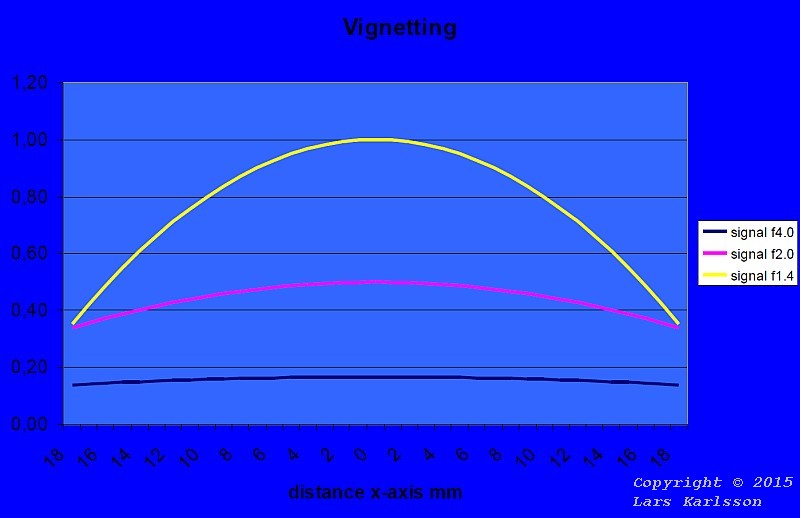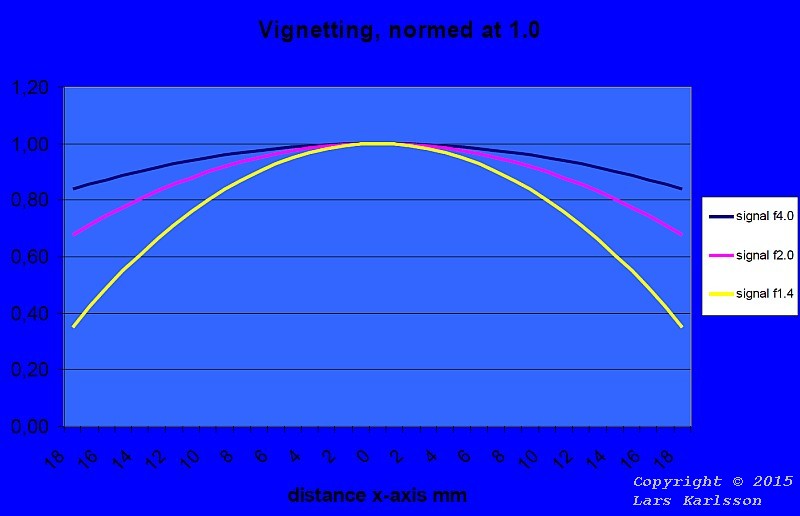5: Vignetting

This is a simulation of a lens to illustrate the lens vignetting at different apertures
and the signal we get along a line across the sensor.
The advantages obtained at stop down:
Prons - Usually sharper image.
- More even brightness.
Cons - In the example takes we must compensate with exposures that are 8 or 2 times as long (3 or 1 aperature step) compared with full opening.
Aperature steps: 4.0, 2.8, 2.0, 1.4.

As you can see in the figure which now is normalized,
equal signal at center. It is only in the central parts we get full advantage of more light when we open the aperture of the lens,
at the edges we don't get the same improvement.
|

